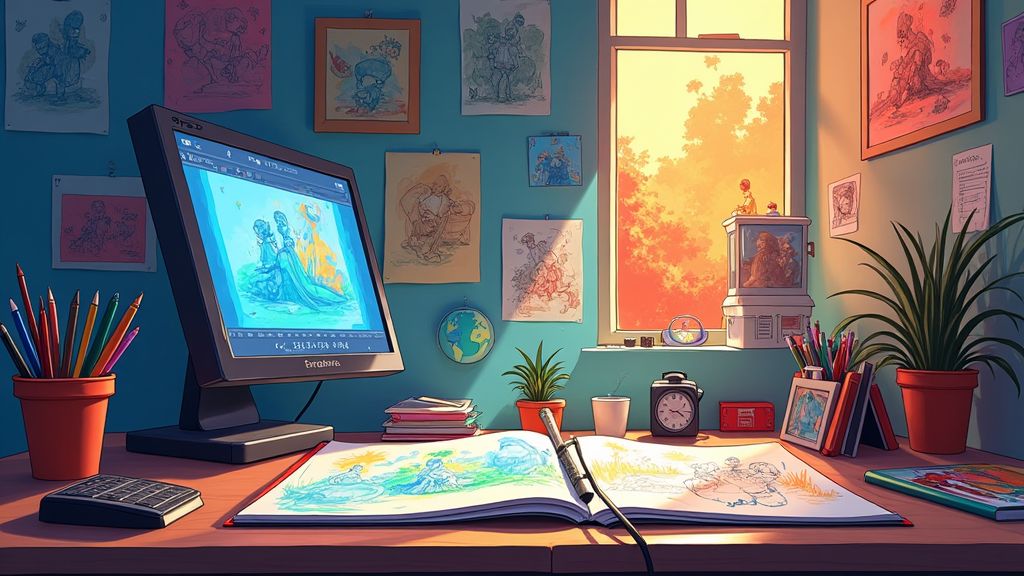How to Create Your Own Animation Project
Do you have a story you’re itching to tell through animation? Are you ready to bring your characters to life on the screen? Creating your own animation project can be an exciting and rewarding experience, but it can also be a daunting task if you’re not sure where to start. In this article, we’ll walk you through the process of creating your own animation project, from concept to completion. Whether you’re a seasoned animator or a beginner looking to dip your toes into the world of animation, we’ve got you covered. So grab your sketchbook and let’s get started!
Developing Your Concept
The first step in creating your own animation project is developing a strong concept. This is the foundation of your project and will guide you through the entire creative process. Start by brainstorming ideas and figuring out what story you want to tell. What are the key themes and messages you want to convey? Who are your characters and what do they want? Once you have a clear idea of what you want to create, it’s time to start fleshing out your concept. Create character profiles, write a detailed outline of your story, and sketch out storyboards to visualize your ideas. The more detailed and fleshed out your concept is, the smoother the rest of the process will be.
Creating Your Assets
Once you have a solid concept in place, it’s time to start creating the assets for your animation project. This includes designing your characters, creating backgrounds, and developing any props or objects that will appear in your animation. Depending on your style of animation, you may choose to create your assets digitally or by hand. Whichever method you choose, make sure to create high-quality, detailed assets that will bring your animation to life. This is a time-consuming process, but it’s essential to take your time and ensure that your assets are polished and ready for animation.
Animating Your Project
With your assets in place, it’s time to start animating your project. This is where the magic happens as you bring your characters and story to life through movement and emotion. Depending on your animation style, you may choose to animate frame by frame, use rigging techniques, or utilize motion capture technology. Whichever method you choose, make sure to pay attention to the small details that will make your animation stand out. This is also the stage where sound design and voice acting come into play, so make sure to pay attention to these aspects as well.
Putting It All Together
Once you’ve finished animating your project, it’s time to put it all together. This includes editing your animation, adding music and sound effects, and ensuring that everything flows seamlessly. Take the time to review your project and make any necessary adjustments to ensure that it meets your vision. Once you’re satisfied with the final product, it’s time to share your animation project with the world. Whether you choose to screen it at a film festival, share it online, or use it as a portfolio piece, be proud of the work you’ve created and celebrate your accomplishment.
Marketing Your Animation
With your project complete, the next step is to consider your marketing approach. Build anticipation by sharing teasers, character designs, or short clips on social media platforms to create interest. Engage with your target audience by hosting Q&A sessions, sharing behind-the-scenes content, or even launching a dedicated website for your project. Effective marketing can enhance visibility, attract more viewers, and potentially open doors to new collaborations and projects.
Getting Feedback
Receiving constructive feedback can be invaluable in refining your skills as an animator. Share your animation with trusted friends, mentors, or industry professionals and ask for honest insights. Be open to constructive criticism, and consider using this feedback to improve future projects. Constructive feedback is a key part of the creative growth process and helps ensure your work resonates with a wide audience.
Exploring Distribution Options
To maximize your animation’s reach, consider exploring different distribution options. You could submit your work to animation film festivals, use online video platforms like YouTube or Vimeo, or even offer it to streaming services. Understanding which option best aligns with your goals can help you reach the right audience and make your animation project as accessible as possible.
Planning Your Next Steps
With your animation project released, think about what’s next for you creatively. Whether it’s diving into another animation, experimenting with a new style, or collaborating with other creators, each project builds on your experience. Consider documenting your journey to showcase your growth and learning. Every step forward adds to your portfolio, paving the way for future opportunities and creative milestones.













